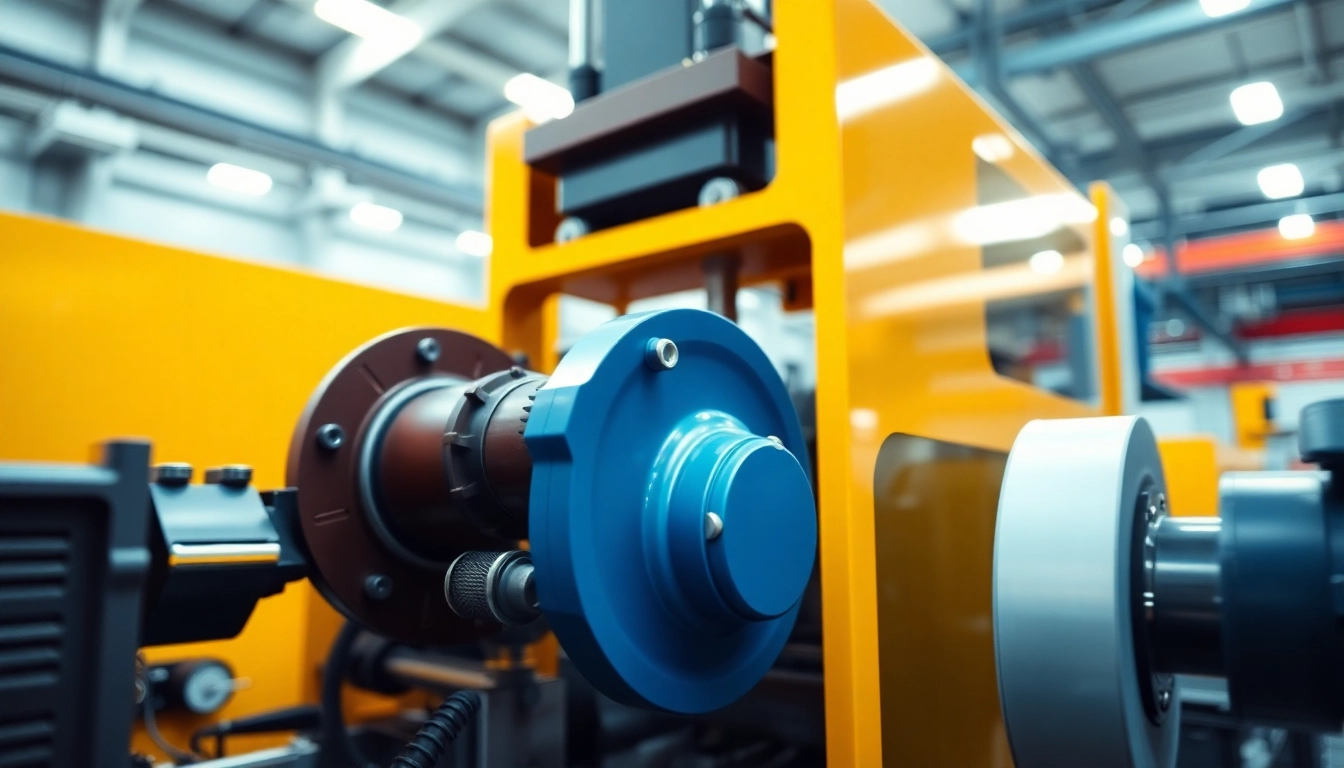Understanding Blow Molding Machines
What is a Blow Molding Machine?
A blow molding machine is an essential device in the manufacturing process of hollow plastic products. Utilizing a method called blow molding, these machines transform plastic into various items, ranging from bottles to containers and complex industrial components. The process begins with heating plastic resin, which is then extruded into a parison—a hollow tube shape. This parison is inflated within a mold using compressed air, resulting in the final product’s shape as the plastic cools and solidifies. The variability in design and application showcases the versatility of blow molding machines in today’s production environment. For further insights into the specific capabilities of machines used in the industry, explore this Blow Molding Machine overview.
Types of Blow Molding Processes
Blow molding encompasses three primary processes: extrusion blow molding (EBM), injection blow molding (IBM), and injection stretch blow molding (ISBM). Understanding the distinctions among these types is crucial for selecting the appropriate technology for specific applications.
Extrusion Blow Molding (EBM)
In EBM, a parison is extruded and then inflated in a mold. This method is commonly used for producing large hollow parts, such as containers. EBM offers high production rates and is ideal for manufacturing items with consistent wall thickness.
Injection Blow Molding (IBM)
IBM involves injecting molten plastic into a mold to create a preform, which is then transferred to another mold where the final shape is blown. This method is well-suited for producing small bottles and containers that require precise dimensions and high-quality surface finishes.
Injection Stretch Blow Molding (ISBM)
ISBM is a variation of IBM that utilizes a stretching action to create products with higher clarity and strength, making it ideal for manufacturing PET bottles. The stretched blow molding process enhances the mechanical properties of the containers, contributing to increased durability and lightweight designs.
Applications in Various Industries
Blow molding machines are utilized across numerous industries, each benefiting from the unique capabilities of this manufacturing process. Key applications include:
- Packaging: The food and beverage industry heavily relies on blow molded bottles and containers for packaging liquids, offering convenience and safety.
- Automotive: Components such as fuel tanks, bumpers, and interior parts are often produced using blow molding, thanks to its efficiency in creating lightweight yet robust structures.
- Consumer Goods: Household items, toys, and personal care product containers often come from blow molding processes, allowing for a wide range of designs and functions.
- Industrial Applications: Larger containers and tanks for chemicals or other substances are routinely manufactured using blow molding techniques, providing reliability and safety.
Benefits of Using Blow Molding Machines
Cost Efficiency and Production Speed
One of the most significant advantages of using blow molding machines is the cost efficiency they offer. The ability to produce large quantities of items rapidly reduces the overall manufacturing costs considerably. When compared to traditional methods such as injection molding, blow molding machines often require lower capital investment and less energy consumption, especially with modern advancements in technology and materials.
Quality and Consistency in Manufacturing
Blow molding machines produce high-quality products with consistent dimensions. The precision in creating molds and the controlled nature of the blowing process ensures that each item maintains uniformity, reducing waste and ensuring product reliability.
Environmental Advantages of Modern Machines
Today’s blow molding machines are designed with sustainability in mind. Many models are optimized for energy efficiency, utilizing less electricity and reducing the carbon footprint of manufacturing processes. Additionally, advancements in materials allow for the use of recycled plastics, contributing to a circular economy and reducing environmental impact.
Key Features to Consider When Choosing a Blow Molding Machine
Machine Capacity and Output Rate
When selecting a blow molding machine, assessing its capacity and output rate is paramount. The machine’s ability to meet production goals and market demand will largely dictate its effectiveness. Manufacturers should consider the size of items to be produced, as well as required production speeds, to ensure they select a machine that aligns with their business needs.
Energy Consumption and Operational Costs
With energy costs steadily rising, understanding the energy consumption of a blow molding machine is crucial. Invest in machines that offer energy-efficient operations, as these can significantly reduce operational costs over time. Researching operational cost metrics, including maintenance requirements and downtime, can also aid in making an informed decision.
Automation and Technological Integration
Modern blow molding machines come with advanced automation features, enhancing productivity and efficiency. Machine operators increasingly favor models integrating smart technologies for monitoring and controlling operations, ensuring optimal performance and minimal human error. Assessing compatibility with Industry 4.0 technologies, such as data analytics and IoT sensors, can provide a competitive edge.
Maintenance and Care for Blow Molding Machines
Regular Maintenance Practices
To maximize the lifespan and performance of blow molding machines, regular maintenance is essential. Implementing a routine maintenance schedule that includes cleaning, lubrication, and inspections can prevent major breakdowns and extend machinery life. Key maintenance tasks should include checking and replacing worn components, ensuring all electrical systems function properly, and monitoring hydraulic fluid levels.
Identifying Common Issues
Operators should be trained to recognize early signs of potential issues, such as unusual sounds, irregular product quality, or machine malfunctions. Promptly addressing these concerns can minimize costly repairs and downtime. Developing an FAQ guide on common problems and solutions can also be beneficial.
When to Seek Professional Help
Some maintenance issues may require professional assistance, especially when dealing with complex mechanical or electrical systems. Establishing a relationship with reputable service providers who specialize in blow molding machinery can facilitate timely repairs and expert guidance when needed, minimizing disruptions to production.
Future Trends in Blow Molding Technology
Innovations Shaping the Industry
The blow molding industry is poised for significant transformation, driven by technological advancements and evolving market demands. Emerging trends include the integration of automation technologies that enhance production capabilities and improve quality control processes. The continued development of lightweight materials also enables manufacturers to create more efficient products without compromising durability.
Impact of Automation and AI
With the integration of artificial intelligence (AI) in blow molding processes, predictive maintenance, and operational analytics become more achievable. AI can optimize production schedules and reduce waste by analyzing real-time data, enabling manufacturers to adapt to shifting market demands swiftly and efficiently.
Market Predictions and Growth Opportunities
Market analysts predict robust growth within the blow molding sector as demand for plastic products continues to rise globally. Industries focusing on eco-friendly packaging solutions and sustainable practices will likely drive future investments in blow molding technology. Companies that stay ahead by adopting innovative techniques and sustainable materials can enhance their competitiveness and capitalize on emerging opportunities.



